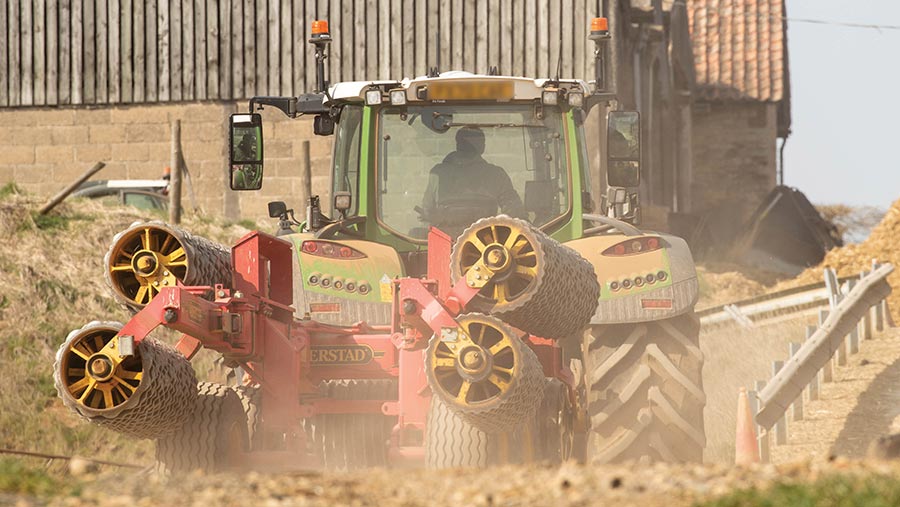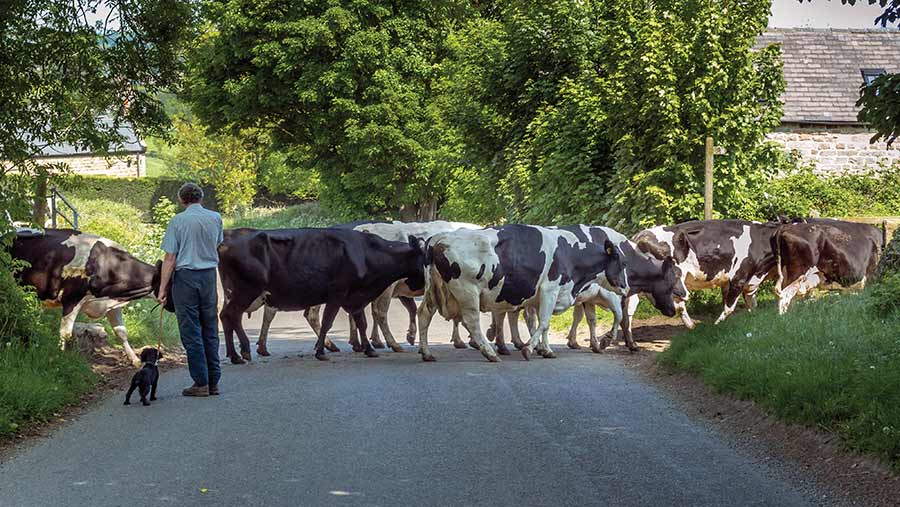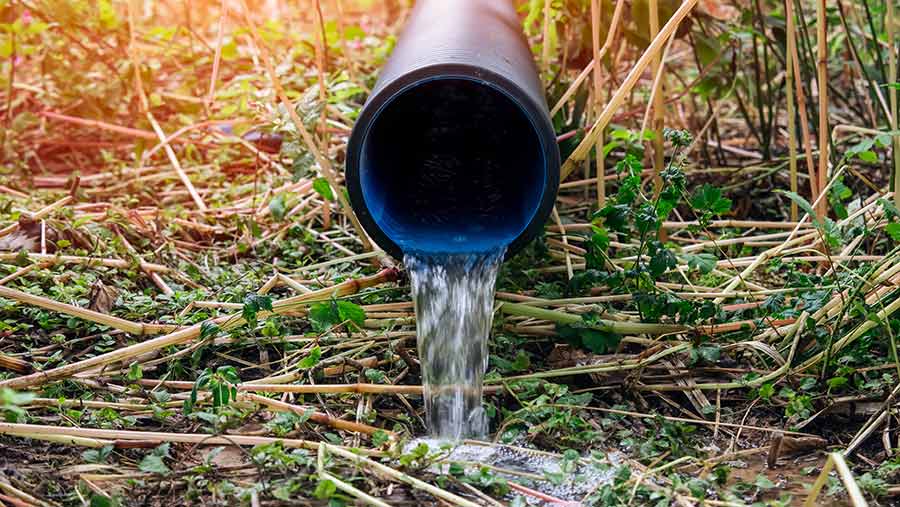What farmers should know about nuisance complaints
 © Tim Scrivener
© Tim Scrivener Complaints from neighbours about smells, light and noise from farms are sadly not uncommon.
The immediate reaction might be that anyone living close to a farm needs to expect countryside aromas and a certain amount of disruption.
However, there may come a point when the impact of a farming operation on its neighbours amounts to legal nuisance.
Edward Venmore, head of the farms, estates and rural land team at solicitor Foot Anstey, warns that claims for nuisance can arise because there can be widely varying expectations of how life in rural areas should look, sound and smell.
See also: What farmers should know about defamation law
“We see tensions between farming businesses and residential properties fairly regularly and they risk becoming more common with increasing numbers of houses being built near farming areas and more people working from home,” he says.
What is nuisance?
There are three different types of nuisance in law: private, public and statutory.
A private nuisance is caused by a person doing – or not doing – something on their own land which they are lawfully entitled to do but which affects another person’s use and enjoyment of their own neighbouring land.
Examples of private nuisance can include:
- Excessive noise from machinery or animals
- Smells from cattle, silage or muckspreading
- Pollution of soil or waterways from the use of fertilisers or pesticides
- Encroachment onto land; for example, by mud and debris.
A public nuisance is an act that endangers the life, property, health, morals or comfort of the public or obstructs the public in its exercise or enjoyment of rights common to all.
This might cover a pollution incident or a blocked public right of way.
Finally, a statutory nuisance can occur when an activity falls within matters listed in Section 79 of the Environmental Protection Act 1990 and amounts to a public or private nuisance or is prejudicial to health.
Examples of a statutory nuisance can include:
- Farm animals being in an unsuitable location which could prejudice health or more generally be considered a nuisance
- Flies coming from a farmyard
- Allowing an accumulation of muck or manure to build up in an unsuitable place
- Dust produced from harvesting
- Loud agricultural machinery.
Who can bring a claim of nuisance?
A private nuisance claim can be made by a neighbouring owner, occupier or tenant who is having the use or enjoyment of their land affected.
A public nuisance claim can be made by the attorney general, a local authority or by individuals if they have suffered special damage.
A local authority can take action against farmers for statutory nuisance following a complaint made by a member of the public.
Alternatively, a claim for statutory nuisance can be brought by a private individual or company as a private prosecution.
This can be a more appealing option than pursuing a private nuisance claim, as a private prosecution for statutory nuisance tends to take place more quickly and if the complainant loses, they usually have to pay only their own costs.

© Alex/Adobe Stock
What is the penalty for nuisance?
Farmers who face a nuisance action may have to pay damages to the aggrieved party or be forced to abide by the terms of an abatement order or injunction, which could mean their farming practices must change.
In statutory nuisance cases, penalties can include unlimited and criminal fines.
Nuisances can also lead to liability under other laws, leading to further criminal penalties.
How do the courts decide if the threshold has been met?
For the more common private and statutory nuisance claims, the court will consider whether there has been an encroachment on to a neighbour’s land, direct physical injury to the neighbour’s land, or interference with a neighbour’s “quiet enjoyment” of their land.
Actual physical damage, such as that caused by pollution, can be relatively straightforward to identify.
However, interference with the enjoyment of land requires the court to make a more subjective assessment.
It will weigh up factors such as whether the activity being complained about is an ordinary use of the land for the locality, whether it “substantially interferes” with the claimant’s ordinary use of their land, the time the activity happens, and its frequency, duration and intensity.
The court is likely to look less favourably on activities causing a disturbance at night, continuing for long periods or happening very frequently.

© Iryna/Adobe Stock
What are the defences to nuisance?
Farmers have several defences, the key one being that they are a “reasonable user”, which means showing that the alleged nuisance is being caused by a reasonable use of their land, given the nature and character of the locality, and is done with reasonable consideration for their neighbours.
If a farmer can prove they have been using their land in the way complained of for 20 years or longer and the neighbour for those 20 years failed to bring an action, the farmer may acquire a right to cause the nuisance.
If someone moves into a property near a farm and then complains of nuisance, it is not a defence that they “came to the nuisance”, although the “reasonable user” defence could apply.
However, if someone were to buy land near a farm, construct a house on it, and then claim the farm was causing a nuisance to them, the farmer might be able to argue that as the farming was a pre-existing activity (provided it was done reasonably), and that it was only because the claimant had changed the use of and built on that land that it had become a nuisance.
If successfully argued, the farming activity would not be considered a nuisance.
A neighbour who has given permission for a nuisance to occur, or who acts in such a way that gives rise to or exacerbates a nuisance, cannot later bring an action.
How to prevent a nuisance court case
Edward says his advice would always be to communicate and engage with the local community to try to build and maintain positive relationships.
It is important not to ignore complaints and it can be dangerous to assume that because someone is licensed or approved to do something, this gives them immunity from a claim.
Ensure that complaints are investigated promptly and keep a record of any steps taken to remedy or limit an activity at risk of being considered a nuisance.
This might mean limiting activity to certain times of the day, cleaning roads of mud or turning off idling machinery.
It can also help to take advice on whether changes can economically be made to farming practices which will reduce the impact on neighbours.
“Lots of improvements that people may be looking at for the benefit of their business can be an improvement for the neighbours too.
“For example, installing a robotic scraper in a dairy unit can be good for the farm, but also quieter for neighbours.”
Best practice guidelines should also be followed, to provide evidence of good farming practice should nuisance proceedings be instigated.
Most disputes are settled out of court, says Edward, but it is important to seek professional advice as early as possible and act immediately on receipt of any pre-action or warning letter.
“Mediation for a nuisance claim is something that we would always consider – court proceeding should be the last resort,” he adds.
Case study: Devon dairy farm
Through the NFU’s Legal Assistance Scheme, Foot Anstey recently successfully acted for a Devon couple in defending a private prosecution for statutory nuisance, brought by their neighbour.
The couple run a dairy farm in close proximity to their neighbour’s rural house. The main allegations of nuisance were around smell, noise and flies encroaching on the neighbour’s property.
As required by the Environmental Protection Act, the neighbour first served a notice requiring the farmers to abate the alleged nuisances.
The Act gives the person served 21 days (three days in the case of noise nuisance) to respond. This is designed to provide an opportunity for discussion between the parties to avoid the need to go to court.
However, the next stage in this case was a private prosecution at the local magistrates’ court.
During the case, the court was given evidence of several mitigations that the farm had implemented to reduce the impact of their activities on the neighbours, including limiting deliveries and certain noisy activities on the farm to between 7am and 7pm Monday to Saturday and 10am to 4pm on Sunday.
They also showed that dairy farming was a well-established activity in the local area and so the farm’s use for dairying was a common and ordinary use of the land.
The judgement was that there was no statutory nuisance and that the farmer was using the land reasonably.
Edward said: “The stakes were high because if the farmer had lost, the court could have made an order effectively restricting their farming operations and issued a fine.
“In our successful defence we were greatly helped by our clients’ excellent record keeping, which showed the efforts they had made to farm to a good standard and the improvements they wanted to make.
“The clients’ positive relationships with other neighbours also made it easier to obtain evidence of the nature of the locality and their farming practices – a key aspect of their defence.”
Steps to prevent a nuisance claim
- Prevention is always better than the cure. Positive and proactive engagement with non-farming neighbours can build good relationships which can greatly avoid the risk of disputes.
- If your neighbour makes a complaint, take it seriously, work with them to try and come up with an agreeable solution.
- Be pragmatic about minimising the impact of your activities on surrounding neighbours, keep records which show you have tried to alleviate potential issues.
- Good record keeping generally is important – it can be used to show that farmers have been working in compliance with regulations, legislation and best practice.
